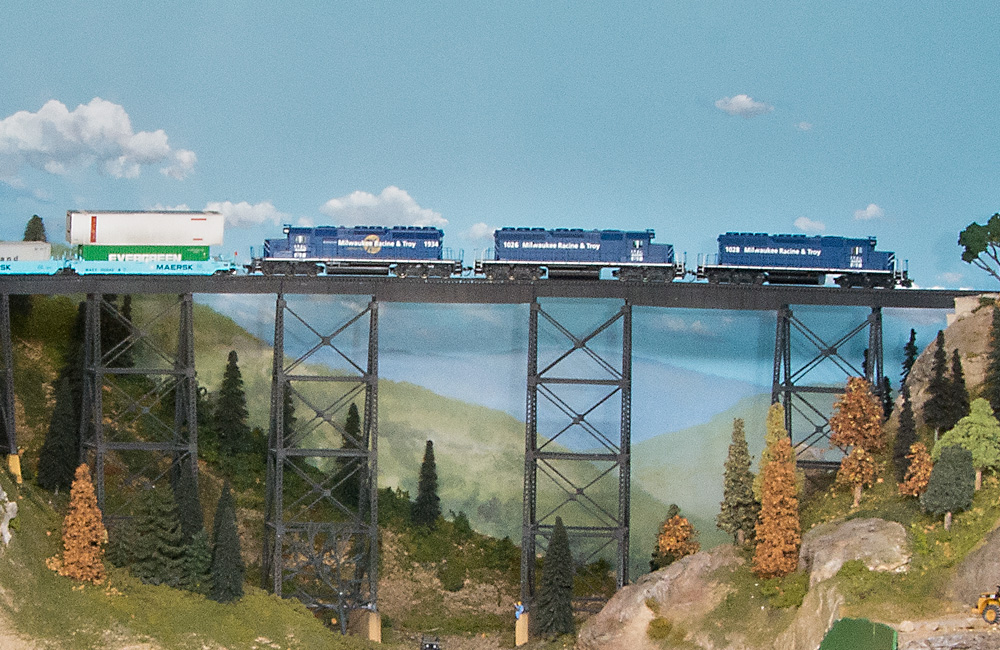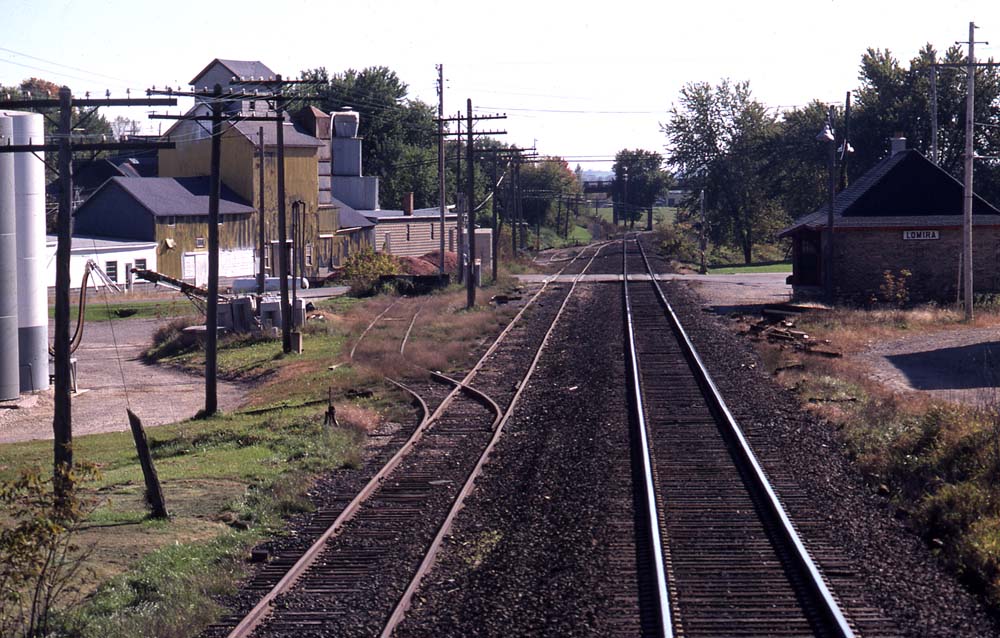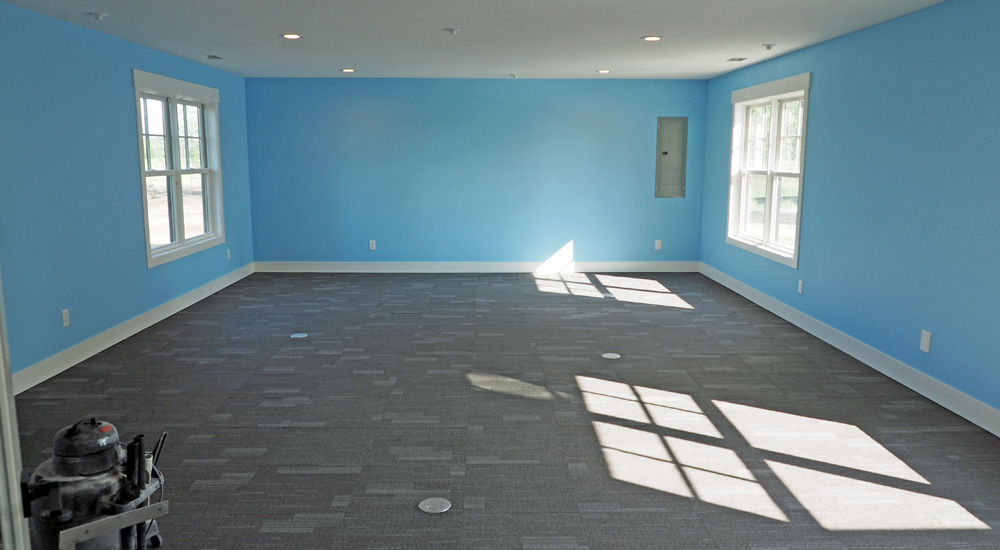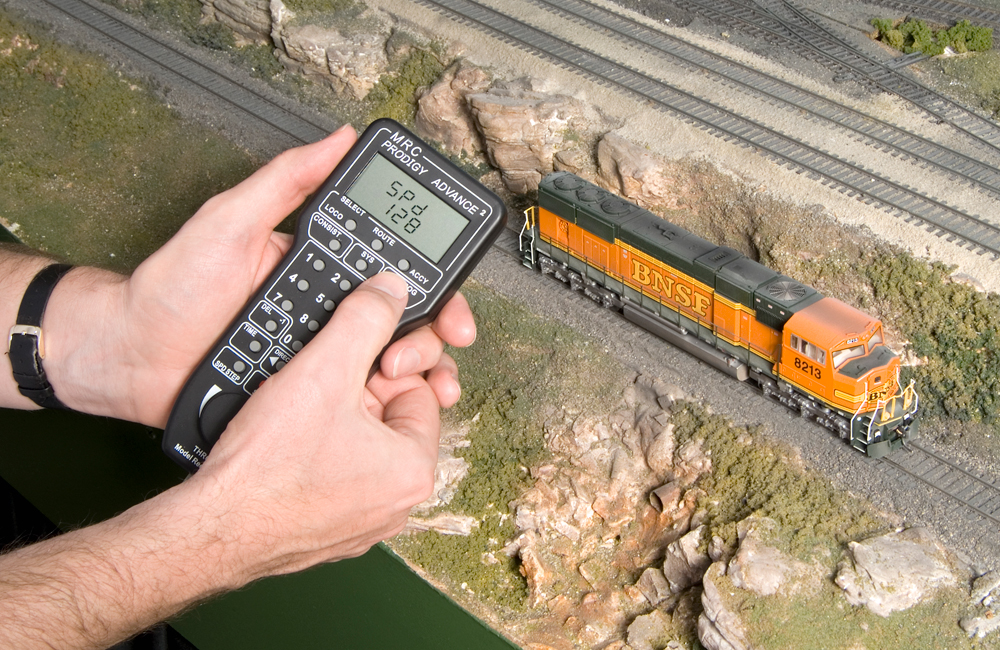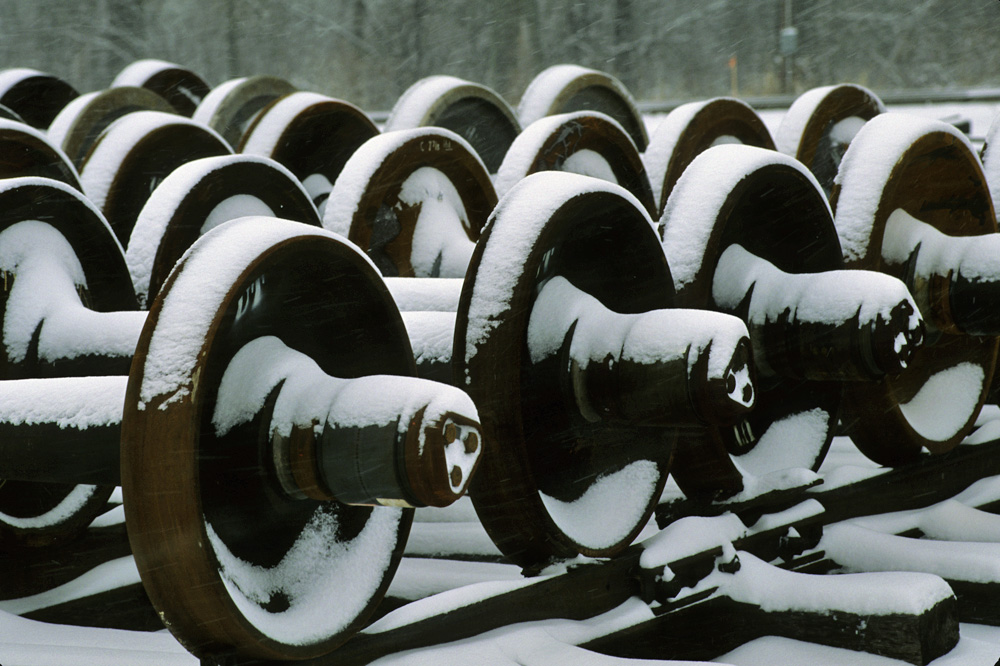
Q: Have the model railroad manufacturers ever considered making the wheels on car trucks free-wheeling, or more specifically, independent of the axles? It seems to me that trucks would bind less on tighter radius curves if each wheel could rotate independently. – Wilt Nelson, Leesburg, Fla.
A: Wheels and axles on model trains are solid for a couple of reasons. First is practicality; making the wheels rotate independently would require more and smaller parts, making trucks more fragile, more expensive, and possibly less reliable. Second, it’s actually more prototypical. Train car wheelsets on the prototype are solid units, just like our models. They handle curves by having a slightly tapered tread profile. As a truck with a rigid wheelbase enters a curve, the inside rail curves away from the flange and rides on the outer part of the wheel, which has a smaller diameter. The outer rail curves inward toward the flange, riding on the thicker inner part of the wheel tread. This means that even though the inner and outer wheels are fixed to each other and rotate at the same rate, the outer wheel actually travels a longer distance than the inner one because of which part of the wheel is riding on the rail. Thanks to the gentle curves on the prototype, this slight difference is enough to keep the wheels on the rails without much wheel slippage (which causes wheel squeal on tight curves). On the model, our cars are light enough that it doesn’t matter if the wheels slip a bit on tight curves.
Q: In the 1990s I routed my cars used a software program that was industry-oriented, not car-orientated. The program was called Railroad Management System by Software Implementation-Sonora Software in Tucson, Ariz. It’s no longer available. Is there any software out there that would be similar? – Thomas Lauritsen, Flippin, Ark.
A: Hi, Tom. You might try out the Model Railroad System, an open-source, freeware system available from Deepwoods Software: deepsoft.com/home/products/modelrailroadsystem/. This suite of programs is available for Windows and Linux. Elements include programs to control signals and turnouts; create switch lists for car routing; make timetables for scheduled passenger trains; and other useful utilities. If it doesn’t do exactly what you’re asking, you might still find parts of it useful. And it costs nothing to try, since it’s a free download.
Q: I’m trying to locate an article you published some time ago about kitbashing an Electro-Motive Division GP39-2. In the article they use two kinds of construction, one using Athearn parts salvaged from extra shells, and the other using Cannon & Co. components. Essentially, two models were built for the article. I would sure appreciate it if you guys could find that article. – Robert P. Turcic, city not given
A: You’re actually thinking of two separate articles. Dean Foster’s article “Kitbashing EMD’s GP39-2” was published in our December 1984 issue. The project uses two Athearn GP-35s. Another article, Tom Busack’s “Keeping up with the GP39-2,” was published in April 1990. This uses an Athearn GP39, an Athearn GP50, and detail parts from Cannon & Co. (among others). If you don’t have these back issues in your stash, you can read and print them by subscribing to our online Archive at https://www.trains.com/mrr/magazine/archive-access/.
Reader tip: Trace a track plan on subroadbed
When transferring a track plan from paper to model railroad benchwork, a lot of measuring can be saved if you have access to a digital projector. Stand the plywood and/or foam base upright and clamp it in position. An image from track planning software, Model Railroader’s Track Plan Database, or a photo of a hand-drawn track plan can be brought up on the computer screen and projected onto the base. Use the image’s edges or grid to adjust the projection’s size and eliminate perspective distortion. The track plan can then be traced using a marker. Once the base is returned to the benchwork, curve and turnout templates can be used to finalize the plan. – R. Bruce Johnson, Clifton Park, N.Y.
Send us your questions
Do you have a question about model railroading you’d like to see answered in Ask MR? Send it to Associate Editor Steven Otte at AskMR@MRmag.com.






